(Page créée avec « The grease must first be cleaned of all impurities. To do this, it is heated until it is well melted. The impurities are deposited by settling at the bottom. As it cools,... ») |
(update property name) |
||
| (9 révisions intermédiaires par un autre utilisateur non affichées) | |||
| Ligne 1 : | Ligne 1 : | ||
| − | {{ | + | {{Tuto Details |
|SourceLanguage=fr | |SourceLanguage=fr | ||
|Language=en | |Language=en | ||
| Ligne 17 : | Ligne 17 : | ||
|IsTranslation=1 | |IsTranslation=1 | ||
}} | }} | ||
| − | {{ | + | {{Introduction |
|Introduction=On the outskirts of Antananarivo, capital of Madagascar, the Andralanitra landfill covers some 20 hectares and receives between 350 and 550 tons of waste every day. More than 3000 ragpickers work there daily, sorting, recovering and recycling waste. Among them, two inhabitants of the neighbouring district, Chris and Aimé, launched a few years ago the production of a "Gasy" soap (made in Madagascar) based on organic waste recovered from the landfill and animal fat. They have created a small business around the sale of their soap, and after a few years of activity they produce and sell nearly 3000 a week. They have even exported their activity into the bush, where hygiene problems and access to this type of product are very difficult. | |Introduction=On the outskirts of Antananarivo, capital of Madagascar, the Andralanitra landfill covers some 20 hectares and receives between 350 and 550 tons of waste every day. More than 3000 ragpickers work there daily, sorting, recovering and recycling waste. Among them, two inhabitants of the neighbouring district, Chris and Aimé, launched a few years ago the production of a "Gasy" soap (made in Madagascar) based on organic waste recovered from the landfill and animal fat. They have created a small business around the sale of their soap, and after a few years of activity they produce and sell nearly 3000 a week. They have even exported their activity into the bush, where hygiene problems and access to this type of product are very difficult. | ||
| Ligne 26 : | Ligne 26 : | ||
It is obvious that this kind of remedy contrasts with European hygiene standards, but as stated above, certain disadvantaged areas of Madagascar do not have any access to cleanliness. What's more, Chris and Aimé remind us by this that it is very easy to make your own soap using these traditional methods, with results as good as commercial soap. | It is obvious that this kind of remedy contrasts with European hygiene standards, but as stated above, certain disadvantaged areas of Madagascar do not have any access to cleanliness. What's more, Chris and Aimé remind us by this that it is very easy to make your own soap using these traditional methods, with results as good as commercial soap. | ||
}} | }} | ||
| − | {{ | + | {{Materials |
|Material=* 1 kg animal fat (pork or beef) | |Material=* 1 kg animal fat (pork or beef) | ||
* 3 kg banana leaf branch ashes | * 3 kg banana leaf branch ashes | ||
| Ligne 35 : | Ligne 35 : | ||
* A way to make fire | * A way to make fire | ||
}} | }} | ||
| − | {{ | + | {{Separator}} |
| − | {{ | + | {{Tuto Step |
|Step_Title=How it works | |Step_Title=How it works | ||
|Step_Content=A soap is normally composed of a fatty acid (here animal fat) and a basic agent (high pH) such as soda or potash (here made from ash). These two compounds create a saponification reaction that creates soap. | |Step_Content=A soap is normally composed of a fatty acid (here animal fat) and a basic agent (high pH) such as soda or potash (here made from ash). These two compounds create a saponification reaction that creates soap. | ||
| Ligne 53 : | Ligne 53 : | ||
Foaming power: a film of carboxylate ions is formed on the surface of water with low surface tension. By agitating the soapy water, air bubbles can then be trapped. The foam does not intervene as such in the washing but is an indicator of the surface tension of the liquid and thus of its detergent power. | Foaming power: a film of carboxylate ions is formed on the surface of water with low surface tension. By agitating the soapy water, air bubbles can then be trapped. The foam does not intervene as such in the washing but is an indicator of the surface tension of the liquid and thus of its detergent power. | ||
}} | }} | ||
| − | {{ | + | {{Tuto Step |
|Step_Picture_00=Savon_de_cendre_et_de_graisse_animale_lessive_cendre.png | |Step_Picture_00=Savon_de_cendre_et_de_graisse_animale_lessive_cendre.png | ||
|Step_Title=Ash detergent | |Step_Title=Ash detergent | ||
| Ligne 64 : | Ligne 64 : | ||
'''Caution: ash lye is a very basic and therefore very corrosive solution, to be handled with care: If possible gloves and glasses.''' | '''Caution: ash lye is a very basic and therefore very corrosive solution, to be handled with care: If possible gloves and glasses.''' | ||
}} | }} | ||
| − | {{ | + | {{Tuto Step |
|Step_Picture_00=Savon_de_cendre_et_de_graisse_animale_fonte_graisse.png | |Step_Picture_00=Savon_de_cendre_et_de_graisse_animale_fonte_graisse.png | ||
|Step_Title=Fat preparation | |Step_Title=Fat preparation | ||
|Step_Content=The grease must first be cleaned of all impurities. To do this, it is heated until it is well melted. The impurities are deposited by settling at the bottom. As it cools, the pure fat forms a solid crust on top. | |Step_Content=The grease must first be cleaned of all impurities. To do this, it is heated until it is well melted. The impurities are deposited by settling at the bottom. As it cools, the pure fat forms a solid crust on top. | ||
}} | }} | ||
| − | {{ | + | {{Tuto Step |
|Step_Picture_00=Savon_de_cendre_et_de_graisse_animale_melange.png | |Step_Picture_00=Savon_de_cendre_et_de_graisse_animale_melange.png | ||
| − | |Step_Title= | + | |Step_Title=Saponification |
| − | |Step_Content=* | + | |Step_Content=*Melt the grease in the metal barrel; |
| − | * | + | *Pour in the ash lye; |
| − | * | + | *Bring to a boil to speed up the reaction, mix to avoid overflow. |
}} | }} | ||
| − | {{ | + | {{Tuto Step |
|Step_Picture_00=Savon_de_cendre_et_de_graisse_animale_boules.png | |Step_Picture_00=Savon_de_cendre_et_de_graisse_animale_boules.png | ||
| − | |Step_Title= | + | |Step_Title=Soap |
| − | |Step_Content= | + | |Step_Content=After boiling, two solutions are offered to us: |
| − | * | + | *Let stand a good hour to obtain a soft dough. By hand, give the soap the desired shape; |
| − | * | + | *Pour the preparation into moulds to obtain the desired shape directly. |
}} | }} | ||
| − | {{ | + | {{Tuto Step |
| − | |Step_Title= | + | |Step_Title=Areas for improvement |
| − | |Step_Content=* | + | |Step_Content=*Instead of animal fat, we can use vegetable oil (rapeseed, olive, flax, sunflower...) depending on the availability of the resource. |
| − | * | + | *It is possible to add essential oils in the preparation to have a pleasant smell. |
| − | * | + | *The soap obtained can be a little basic, therefore bad for the skin. To lower the pH, you can either add vinegar to the solution or mix it with clay powder. |
| − | * | + | *The quality of the ash influences the quality of the soap: apple ash, walnut shell ash or finely sifted oak ash gives a good quality soap. Burn the wood at a very high temperature also makes it possible to obtain a whiter ash and thus of better quality for the manufacture of soap. |
}} | }} | ||
| − | {{ | + | {{Notes |
| − | |Notes= | + | |Notes=This tutorial is inspired by the work of Chris and Aimé, from Antananarivo in Madagascar. |
| − | + | Feel free to comment, share, and enhance the tutorial information useful for its improvement. | |
| − | + | Check out the Low-tech Lab's [http://lowtechlab.org/biblilowtech/ Biblilowtech] ! | |
}} | }} | ||
| − | {{ | + | {{Tuto Status |
|Complete=Yes | |Complete=Yes | ||
}} | }} | ||
Version actuelle datée du 22 octobre 2019 à 15:09
Description
Making soap using banana tree ashes and animal fat
Introduction
On the outskirts of Antananarivo, capital of Madagascar, the Andralanitra landfill covers some 20 hectares and receives between 350 and 550 tons of waste every day. More than 3000 ragpickers work there daily, sorting, recovering and recycling waste. Among them, two inhabitants of the neighbouring district, Chris and Aimé, launched a few years ago the production of a "Gasy" soap (made in Madagascar) based on organic waste recovered from the landfill and animal fat. They have created a small business around the sale of their soap, and after a few years of activity they produce and sell nearly 3000 a week. They have even exported their activity into the bush, where hygiene problems and access to this type of product are very difficult.
Their business is quite successful and has advantages that can't be ignored: with 1kg of animal fat, bought for 1200 Ariary (0.33€), they produce around 30 soaps which they sell for 200 Ariary apiece. The plant matter used in the making of the soap as well as the fuel used for the preparation heating are salvaged from the waste, which does not yield any extra cost.
This tutorial details the making of Gasy soap according to Chris and Aimé's method.
It is obvious that this kind of remedy contrasts with European hygiene standards, but as stated above, certain disadvantaged areas of Madagascar do not have any access to cleanliness. What's more, Chris and Aimé remind us by this that it is very easy to make your own soap using these traditional methods, with results as good as commercial soap.
Matériaux
- 1 kg animal fat (pork or beef)
- 3 kg banana leaf branch ashes
- 10 L rainwater
Outils
- A metal bucket
- A plastic bucket
- A pole for mixing (wood used here)
- A way to make fire
Étape 1 - How it works
A soap is normally composed of a fatty acid (here animal fat) and a basic agent (high pH) such as soda or potash (here made from ash). These two compounds create a saponification reaction that creates soap.
The Chemical Process
Saponification is the reaction of a fatty substance with hydroxide ions (provided by an alkali such as potash or soda) to give a carboxylate ion (soap) and glycerol (also called glycerin).
Soaps are therefore mixtures of carboxylate ions and metal cations (sodium or potassium ions). The carboxylate ion is a surface-active agent that lowers the surface tension of water: it is a detergent.
It ensures washing thanks to 4 qualities : The wetting power: soapy water can penetrate the small interstices of the surface in contact (cloth, skin, table, plate...) more effectively than water ; Emulsifying power: the carboxylate ions agglutinate around the dirt and penetrate between it and the surface in contact until they isolate the dirt from this surface. They form micelles containing small particles of dirt. Carboxylate ions have a lipophilic end and are therefore particularly effective against fatty substances; The dispersing power: due to the properties of the carboxylate ions and the structure of the micelles, they repel each other and are therefore dispersed in soapy water; Foaming power: a film of carboxylate ions is formed on the surface of water with low surface tension. By agitating the soapy water, air bubbles can then be trapped. The foam does not intervene as such in the washing but is an indicator of the surface tension of the liquid and thus of its detergent power.
Étape 2 - Ash detergent
- Recover wood ash, it must be fine and come from natural wood;
- Mix ash and rainwater in a 1:3 ratio (here 3kg ash for 10L water). Mix occasionally, let stand for about 3 days;
- Filter finely into a cloth; we get our base, potash.
To test the concentration of our detergent, we can use a very simple technique: dip a chicken feather in the detergent, if it starts to dissolve, the detergent has the right concentration.
Caution: ash lye is a very basic and therefore very corrosive solution, to be handled with care: If possible gloves and glasses.
Étape 3 - Fat preparation
The grease must first be cleaned of all impurities. To do this, it is heated until it is well melted. The impurities are deposited by settling at the bottom. As it cools, the pure fat forms a solid crust on top.
Étape 4 - Saponification
- Melt the grease in the metal barrel;
- Pour in the ash lye;
- Bring to a boil to speed up the reaction, mix to avoid overflow.
Étape 5 - Soap
After boiling, two solutions are offered to us:
- Let stand a good hour to obtain a soft dough. By hand, give the soap the desired shape;
- Pour the preparation into moulds to obtain the desired shape directly.
Étape 6 - Areas for improvement
- Instead of animal fat, we can use vegetable oil (rapeseed, olive, flax, sunflower...) depending on the availability of the resource.
- It is possible to add essential oils in the preparation to have a pleasant smell.
- The soap obtained can be a little basic, therefore bad for the skin. To lower the pH, you can either add vinegar to the solution or mix it with clay powder.
- The quality of the ash influences the quality of the soap: apple ash, walnut shell ash or finely sifted oak ash gives a good quality soap. Burn the wood at a very high temperature also makes it possible to obtain a whiter ash and thus of better quality for the manufacture of soap.
Notes et références
This tutorial is inspired by the work of Chris and Aimé, from Antananarivo in Madagascar.
Feel free to comment, share, and enhance the tutorial information useful for its improvement.
Check out the Low-tech Lab's Biblilowtech !
Yes
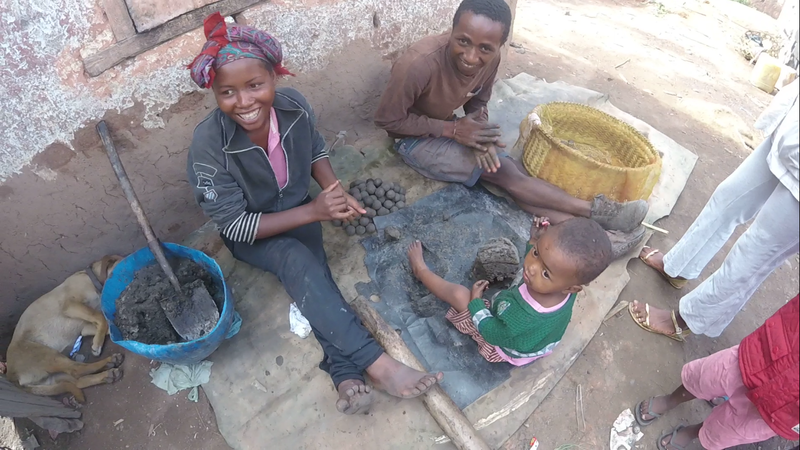
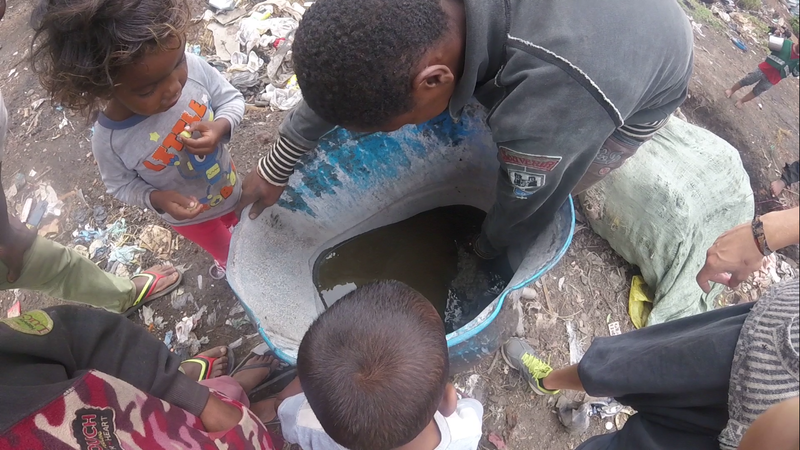
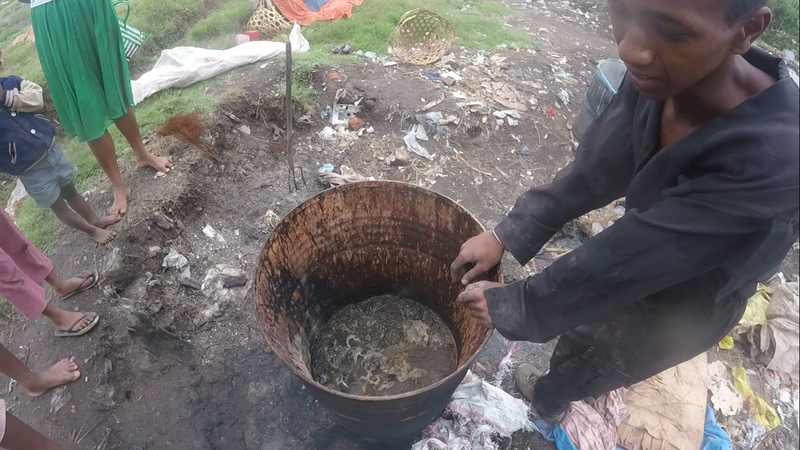
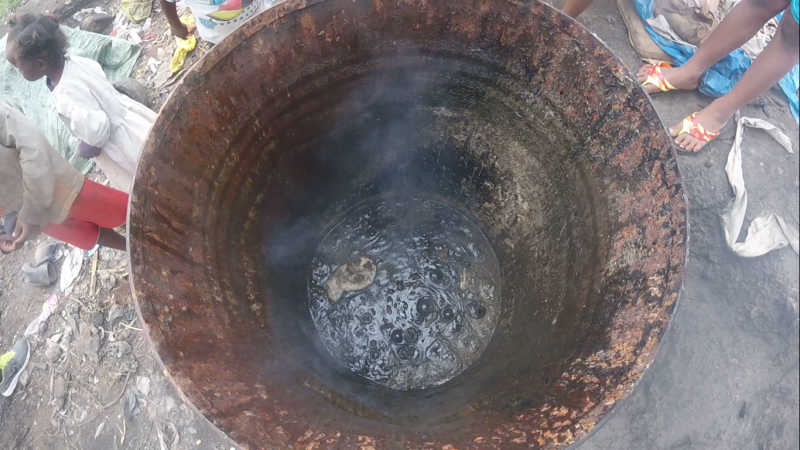
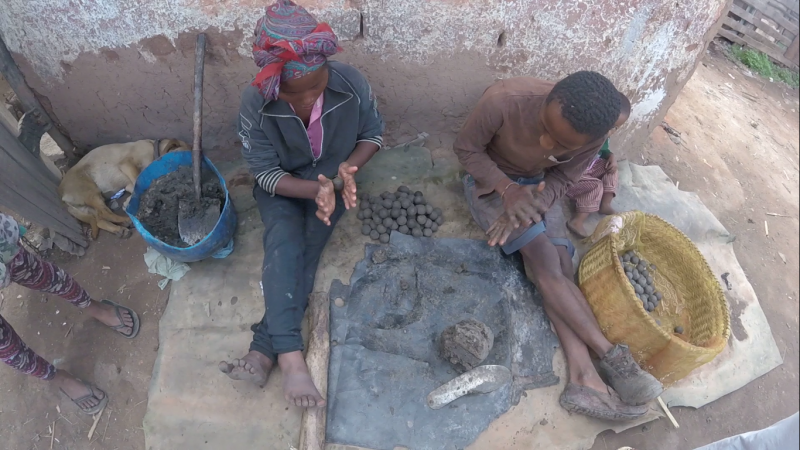
 Français
Français English
English Deutsch
Deutsch Español
Español Italiano
Italiano Português
Português